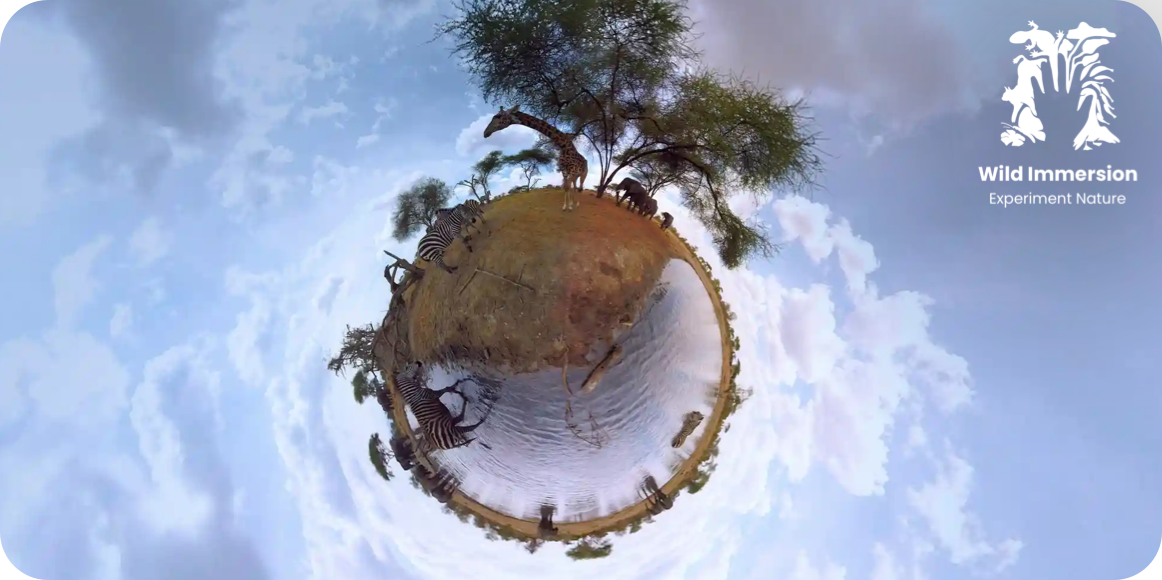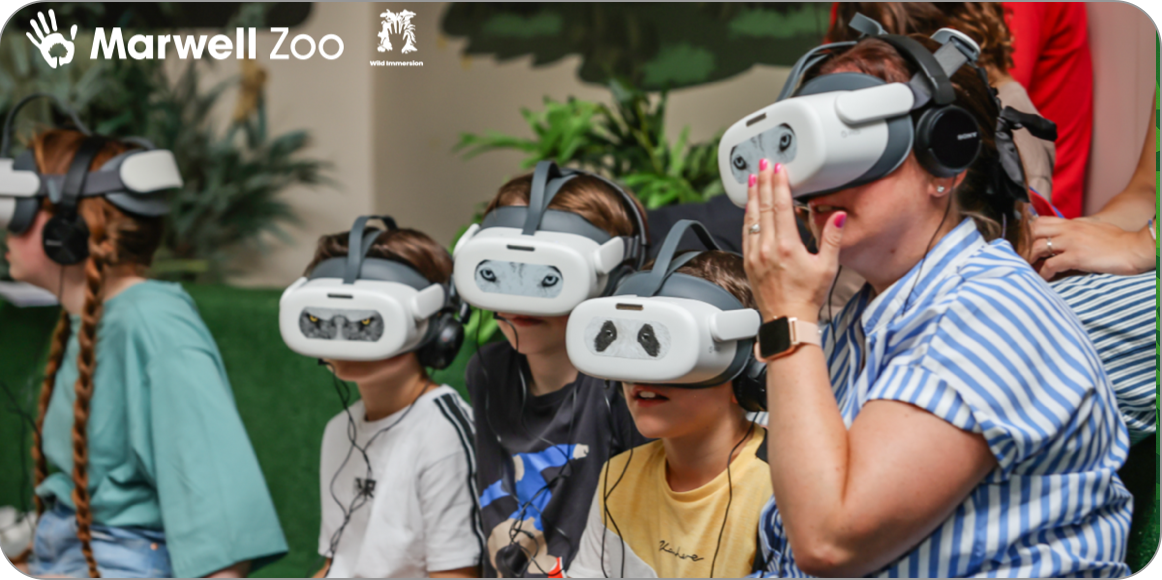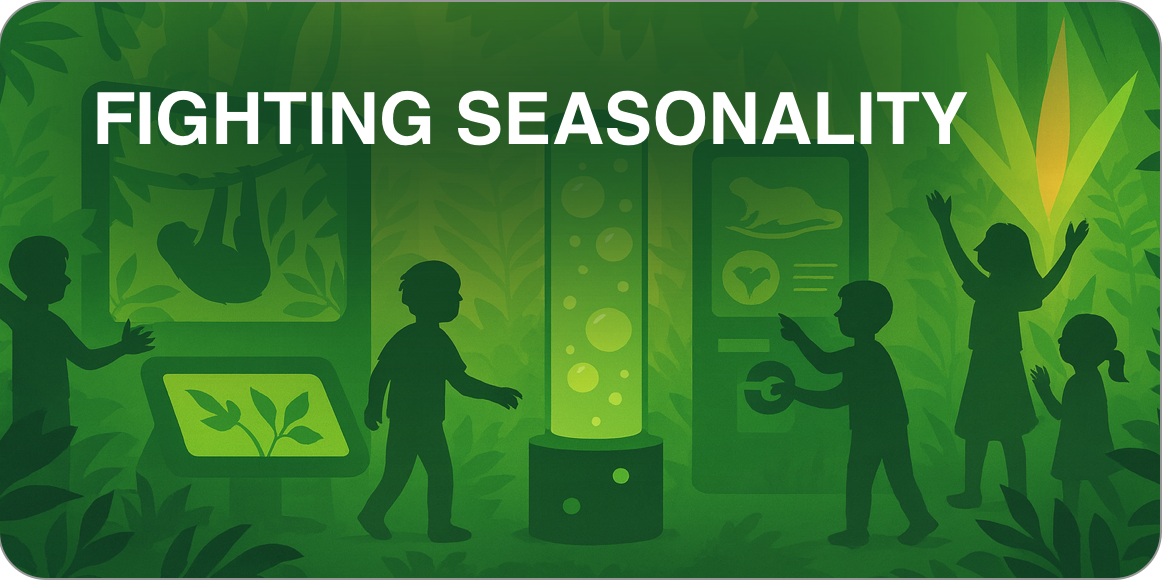Jane Goodall’s Transformational Journey with Virtual Reality
Amazing!” gasps Jane Goodall, as she tilts her head in all directions, oblivious to the outside world. Goodall is the primatologist who changed our understanding of nature by recording chimpanzees using tools, a skill previously thought to separate humans from animals. But today Goodall is the one mastering a new tool: the 84-year-old is sitting spellbound on a sofa, wearing a VR headset and a wry smile.
She’s watching a film from The Wild Immersion, a project intended to raise awareness of – and perhaps even save – the natural world, via 360-degree virtual reality wildlife documentaries. Introduced by Goodall, they really are immersive: you’re practically nuzzling into the pandas’ fur, flying with the flamingos over an African lake. Then a lioness comes up and sniffs your face, before a giraffe walks right over you, its vast legs splayed above you like pillars. So that’s what a giraffe’s underneath looks like. Turn your head and the savannah stretches to the horizon in every direction.
“Mouse, you have a go,” says Goodall, passing the headset to her assistant Mary Lewis. We’re in the London offices of the Jane Goodall Institute, which is in Mary’s house. “Aaargh!” screams Mary. She’s just come face to face with a cobra. “My favourite thing is watching other people watch,” Goodall says. “It’s so funny!” Having lived in the wilds of Tanzania for 15 years, Goodall is less fearful. “I used to be afraid if I heard a leopard at night when I was alone up on the peak,” she says. “I’d pull the blanket over my head.”
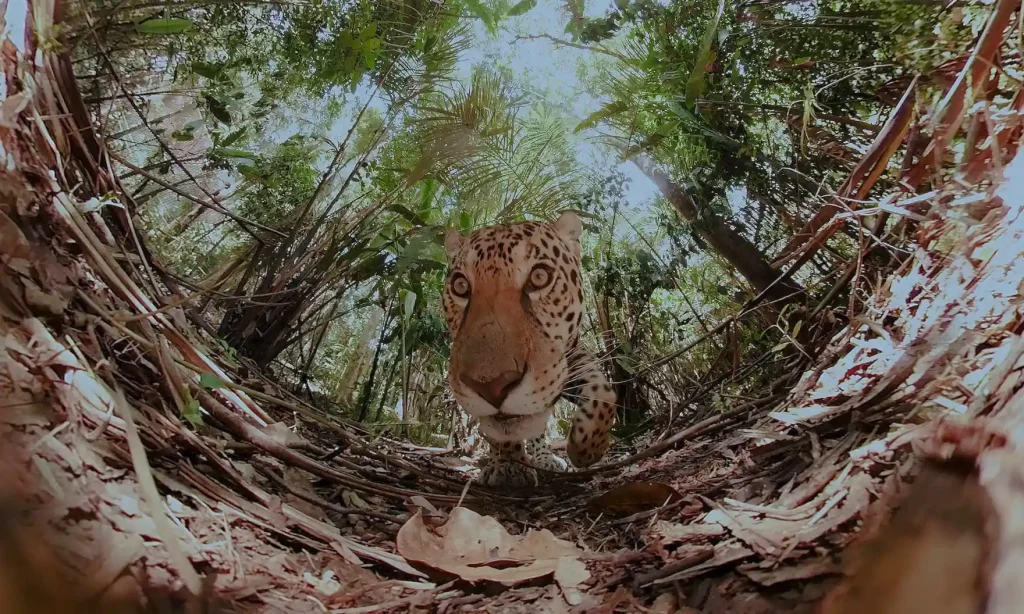
Immersive VR Experience at the Wild Immersion
Now the fear is more global. We hardly need reminding that these animals and their habitats, and by extension our own survival, are in mortal danger. The numbers are chilling: 16,000 species in danger of extinction, including a quarter of all mammals and one in five plant species (and much more by the end of the century). It’s time we all stopped pulling the blanket over our heads.
That’s where The Wild Immersion comes in. The first three 12-minute films, capturing African savannah, underwater and polar habitats, are debuting at the Cannes film festival. There are plans to exhibit them at venues globally (including in China, the US, and London). Beyond that, headset-makers Lenovo are currently marketing its VR Classroom technology, including The Wild Immersion’s content, to schools in the US, enabling “virtual field trips”. Money raised will fund existing nature reserves and create new ones.
It took 120 days of filming, on five continents, to produce 80 minutes of footage, using a small team headed by French film-maker Raphaël Aupy. There was no trickery such as scent or food to attract animals: the cameras were simply placed in the habitats, manned or unmanned. Sometimes they were on drones – or, in the case of the pandas, on the end of four-metre poles. They did lose a few cameras to the lions.
“The films are a way of interesting kids in conservation,” says Goodall. “And they may inspire people to save up and go out there and see it for themselves.” There’s also the depressing thought that The Wild Immersion may one day be the only way future generations get to see these creatures – because we’ve made them extinct.
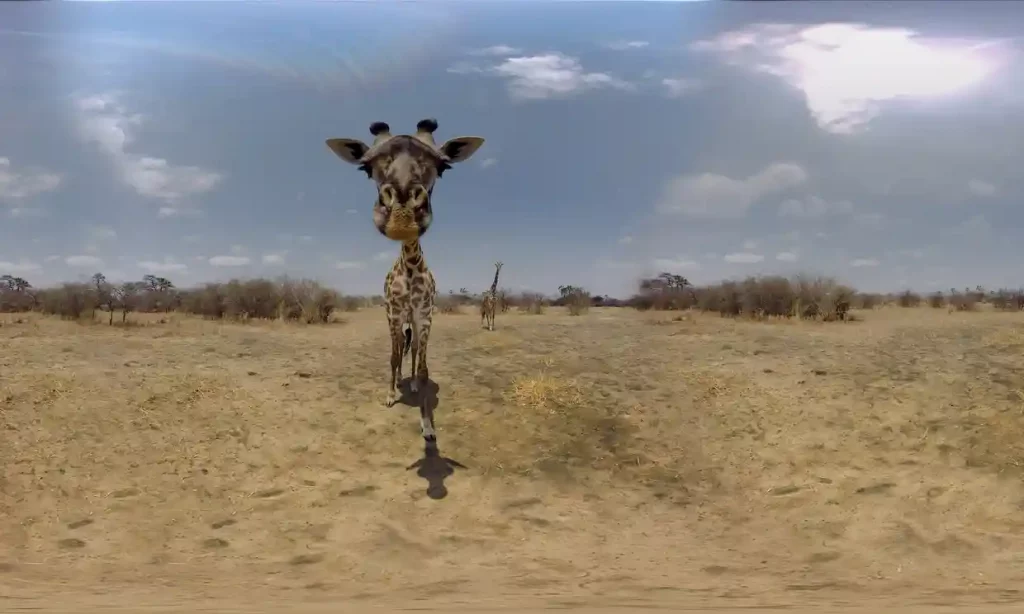
Global Impact and Educational Outreach Through VR
Goodall first travelled to Gombe, Tanzania, in 1960 as an untrained 26-year-old researcher, generating such headlines as “Comely miss spends her time eyeing apes” and ruffling scientific feathers by giving the chimps names, before documenting their personalities and relationships. But she discovered what nobody else had: that chimpanzees used tools, hunted strategically and ate other chimps or monkeys, even killed each other. Goodall’s work redefined humanity’s conception of itself. Her book, In the Shadow of Man, has been translated into 48 languages.
But Goodall gave up full-time research at Gombe in 1986. “I suddenly realised the chimps were vanishing, the forests were going, terrible things were going on in medical research, and I knew my time had come to do something about it.”

Goodall’s Legacy and Continued Advocacy
Today she occupies a rarefied place in the cultural ecosystem, having been a fixture of naturalism, conservation and environmentalism for more than half a century. Elegant, unflappable, calm of voice, sharp of intellect, awesome of reputation, she returns to Gombe twice a year but is no longer on first-name terms with the chimps. She spends most of her time travelling – lecturing, campaigning, visiting the innumerable outposts of her institute. Just hearing her current itinerary is exhausting: a few days in England (home is still Bournemouth, with her sister’s family), then “Austria, Hungary, Sweden, Holland, back five days, then all over Africa: Tanzania, Uganda, South Africa, Kenya – I’ve just cut out the Democratic Republic of the Congo and the Republic of Congo, but I’m away, what is it, two weeks?”
“Four weeks in Africa,” Lewis corrects her.
“I never know,” Goodall smiles. She is in constant demand: “Will I write this? Will I endorse this? People wanting video messages for conferences I can’t attend. I can’t do it all.” The Wild Immersion was such a request. The company’s French founder, Adrien Moisson, an entrepreneur with a background in marketing and veterinary science, secured an audience with Goodall while she was in transit at Heathrow two years ago, convincing her this would be a worthwhile venture.
Goodall recalls discussing this with David Attenborough. “There was one time, years ago, when he was going to give up. When I talked to him, he was totally depressed and feeling hopeless. Then somehow something happened and he dived back in.” What did she say to him? “I did my usual spiel, ‘We can’t give up.’”
Jane Goodall in Gombe
When Jane Goodall first arrived at Gombe, it was part of a belt of equatorial forest that stretched across Africa. Today it is tiny, just 35 sq km. Recent satellite images revealed the area around the park has lost 80 to 90% of its forests. But now Goodall says the trees are growing back. Her institute works with 72 villages around Gombe, promoting micro-credit, keeping girls in school, reducing use of chemicals, finding less destructive income sources such as shade-grown coffee – the kind of patient, long-term work that rarely makes the news.
“Most ordinary people just feel, ‘What can I do to help?’ So they do nothing. My life mission is to give people hope, because without hope you don’t bother. Being abusive is not going to get you anywhere. You need to reach the heart. Once you’ve reached the heart, you’ve got somebody for good.”
Article written by The Gardian
Read the article here
